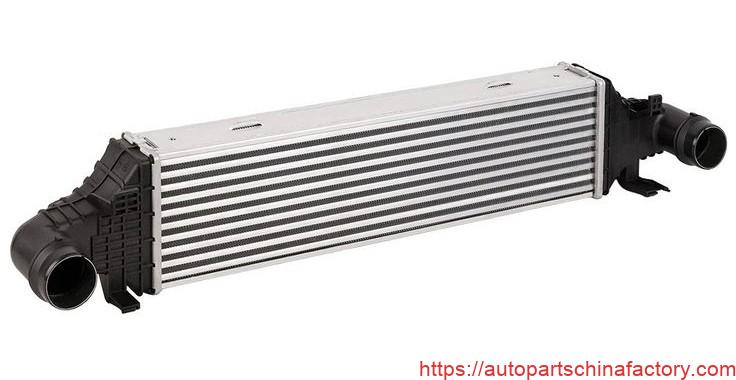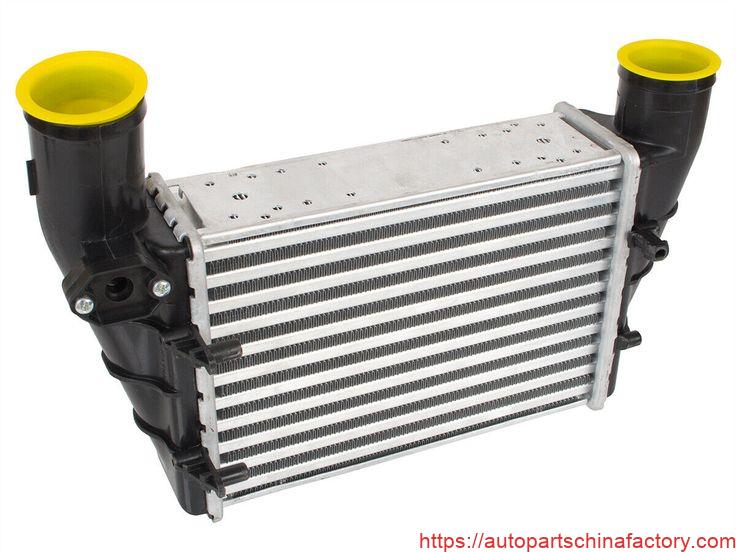- أ +
إذا كنت متحمسًا للسيارات, خاصة واحدة مع مركبة توربينية أو شحن فائق الشحن, من المحتمل أن تكون قد سمعت عن المبرد. ولكن ما هو بالضبط, ولماذا هو أمر بالغ الأهمية للأداء? دعونا نغوص في عالم المبردات المبردة للسيارات.

What is an Automotive Intercooler? (تعريف)
واردة تبرد السيارات (المعروف أيضًا باسم مبرد الهواء الشحن) هو جهاز ميكانيكي يستخدم في محركات الاحتراق الداخلي الشاحن للشحن التوربيني لتبريد الهواء المضغوط قبل دخول غرف الاحتراق بالمحرك. عندما يتم ضغط الهواء بواسطة شاحن توربيني أو شاحن فائق, تزيد درجة حرارتها بشكل كبير. Hot air is less dense than cool air, meaning it contains fewer oxygen molecules per given volume. The intercooler's job is to lower the temperature of this compressed air, making it denser and richer in oxygen.
Why is a Cooler Charge Air Important? (الاستخدام)
Cooling the compressed air offers several significant benefits:
- Increased Power: Denser, cooler air means more oxygen molecules enter the cylinders. More oxygen allows for more fuel to be burned efficiently, resulting in a more powerful combustion stroke and increased horsepower and torque.
- تحسين كفاءة استهلاك الوقود: By optimizing combustion, the engine can often achieve better fuel economy.
- Reduced Detonation (Knocking): Hot air is more prone to pre-ignition or "knocking," which can damage the engine. Cooling the air reduces this risk, allowing for more aggressive ignition timing and higher boost pressures without harm.
- Enhanced Engine Longevity: By reducing thermal stress and detonation, the intercooler contributes to the overall longevity of engine components.
What Does an Intercooler Look Like? (مظهر)
Intercoolers resemble small radiators, typically constructed with a core of fins and tubes, similar to an engine's main radiator or a heater core. They usually have two large ports for air intake and outlet. They come in various shapes and sizes to fit different vehicle layouts and performance needs:
- Front-Mount Intercooler (FMIC): Located at the front of the vehicle, often behind the bumper, to receive maximum airflow. These are common in high-performance applications.
- Top-Mount Intercooler (TMIC): Sits on top of the engine, often directly below a hood scoop to draw in cool air.
- Side-Mount Intercooler (SMIC): Located in the fender wells, usually found in pairs on some vehicles.
- Water-to-Air Intercooler (Liquid-to-Air): Uses a separate cooling circuit with coolant and a heat exchanger to cool the charge air, offering more consistent cooling but added complexity.

تثبيت: الموقع والتعقيد
The installation of an intercooler varies greatly depending on its type and the vehicle.
- FMIC Installation: This often involves removing the front bumper, potentially modifying the bumper support, and running new charge pipes. It can be a moderately complex DIY task or a straightforward job for a professional.
- TMIC Installation: Generally simpler, as it's more accessible, often just requiring removal of engine covers and hoses.
- SMIC Installation: Can range in difficulty, often involving removing fender liners and connecting to existing piping.
- Water-to-Air Intercooler Installation: These are the most complex, requiring the installation of a separate pump, reservoir, and heat exchanger (radiator for the water).
Regardless of the type, proper sealing of all connections and careful routing of charge pipes are crucial to prevent boost leaks.
المواد ومواقع التصنيع
Most intercoolers are primarily made from الألومنيوم. Aluminum is chosen for its excellent thermal conductivity (ability to transfer heat efficiently) and its lightweight properties. The core often consists of aluminum tubes and fins, while the end tanks (the parts where the air enters and exits) are also typically aluminum, إما يلقي أو ملفقة.
As for manufacturing locations, the global automotive supply chain is vast. You'll find intercoolers produced in countries with significant automotive component manufacturing capabilities, مشتمل:
- الصين: A major global hub for automotive parts production, بما في ذلك مكونات ما بعد البيع و OEM.
- المكسيك: A key manufacturing base for parts supplied to North American vehicle assembly plants.
- الولايات المتحدة: Several specialized performance parts manufacturers and OEM suppliers operate here.
- ألمانيا: Known for high-quality engineering and automotive component suppliers.
- اليابان: A strong presence in both OEM and aftermarket automotive parts.
- كوريا الجنوبية: A growing force in the automotive industry with component manufacturing.
The specific origin will depend on the brand (OEM مقابل. ما بعد البيع) and the supply chain strategies of the manufacturers.
Price Range of an Intercooler
The cost of an intercooler can vary significantly based on the vehicle, intercooler type (front-mount, top-mount, water-to-air), ماركة (OEM مقابل. aftermarket performance), and material quality.
- Aftermarket Performance Intercoolers: هذه يمكن أن تتراوح من $200 ل $1,500+ دولار أمريكي. Entry-level direct-fit aftermarket options might be at the lower end, while large, highly efficient, custom-fit units for high-performance applications will be at the higher end.
- OEM Replacement Intercoolers: If you're replacing a stock intercooler, an OEM part could range from $300 ل $800+ دولار أمريكي, اعتمادا على السيارة.
- Water-to-Air Intercooler Kits: These are typically the most expensive, often starting from $800 and going up to $2,500+ دولار أمريكي for complete kits with pumps, reservoirs, and heat exchangers.
- عمل التثبيت: If you're not doing it yourself, professional installation costs can range from $150 ل $600+ دولار أمريكي, depending on the complexity and shop rates. Front-mount installations generally incur higher labor costs.
خاتمة
The intercooler is an indispensable component in any forced-induction vehicle. By efficiently cooling the compressed air, it directly contributes to increased power, improved efficiency, and enhanced engine reliability. Whether you're looking to upgrade for more performance or simply understand how your turbocharged engine works, recognizing the vital role of the intercooler is key to appreciating automotive engineering.


